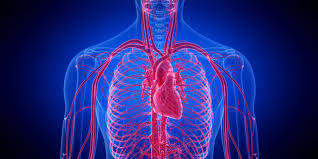Veins are blood vessels that carry blood back to the heart. They play a vital role in returning deoxygenated blood and waste products from the body’s tissues to the lungs for oxygenation.
Types of Veins
- Superficial veins: These veins are located near the skin surface, such as the veins in your arms and legs.
- Deep veins: These veins are located deep within the body, often running alongside arteries.
Functions of Veins
- Transport blood: Veins transport deoxygenated blood and waste products from the body’s tissues back to the heart.
- Maintain blood pressure: Veins help to maintain blood pressure by regulating the amount of blood returning to the heart.
- Facilitate blood flow: The valves in veins help to prevent blood from flowing backward, ensuring that it continues to flow towards the heart.
Venous Diseases
A number of diseases can affect the veins. These include:
- Varicose veins: Enlarged, twisted veins, often found in the legs.
- Phlebitis: Inflammation of a vein.
- Deep vein thrombosis (DVT): A blood clot in a deep vein, often in the legs.
Veins are essential for the circulation of blood throughout the body. Understanding their structure and function can help you maintain healthy vein health and reduce your risk of venous diseases.



